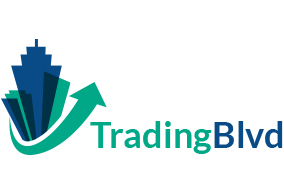While Wall Street buzzes with predictions about stocks, interest rates, and market finishes, it’s important to remember that the future remains stubbornly unwritten. Human fortune-telling, despite its confident pronouncements, has a patchy track record at best. Instead of chasing uncertain prophecies and potentially getting whipsawed by volatile markets, let’s shift our focus.
Let’s build portfolios that stand tall like sturdy pillars, weathering any storm the economic winds may bring. By incorporating these five key attributes, we can create investments that are resilient, adaptable, and poised for long-term success, regardless of what tomorrow holds.
1. Profit Powerhouse: Consistent Earnings Fuel Success

Imagine a company as a money-making machine. The most attractive ones churn out profits consistently, exceeding their peers. Higher profits translate to higher returns for investors, making them the lifeblood of any sustainable business. They don’t need constant financial injections, unlike companies struggling with profitability.
These rely on debt or issuing more shares, diluting existing investors’ ownership. While such tactics might buy time, they’re ultimately liabilities, not assets. They look for companies that are profit powerhouses, bringing in impressive returns that consistently beat market averages, all while keeping their balance sheets healthy.
2. Rock-Solid Foundation: A Strong Balance Sheet Weathers Storms
Building a house on shaky ground wouldn’t be wise, and the same goes for investments. A strong balance sheet, the company’s financial foundation, is crucial. Businesses face numerous risks, from economic shifts to changing consumer trends, many beyond their control.
But one risk they can manage is balance sheet risk, and responsible management prioritizes it. Companies with strong balance sheets are more likely to weather economic downturns and emerge stronger when things improve. Imagine them as fortresses, prepared to withstand unforeseen challenges. This gives you, the investor, confidence even when economic headwinds blow.
3. Standing Out From the Crowd

Imagine two athletes competing, one with superior training and equipment. That’s the power of a competitive advantage in business. It gives companies an edge over rivals, enabling them to outperform, grow sustainably, and attract and retain customers.
It’s like a moat protecting a castle, making it difficult for new competitors to enter or replicate their unique value proposition. Think of pipelines transporting resources across vast distances or efficient railways connecting continents. These impressive assets create barriers to entry, giving them an unfair advantage. Do your investments have that edge?
4. Finding Value: Buying Right, Not Just Buying
A competitive advantage is vital, but price plays a crucial role too. Investors use tools like the price-to-earnings (P/E) ratio to assess if a stock is undervalued or overvalued. Comparing these metrics to industry averages and historical values helps make informed decisions. Remember, price and value aren’t the same.
Markets are volatile, creating temporary windows to buy quality companies at bargain prices. As Warren Buffett famously said, “Price is what you pay; value is what you get.” The focus is on buying when companies are temporarily undervalued, providing an appealing entry point compared to their historical performance and the market.
5. Sharing the Spoils: Dividends and Beyond

For income-focused investors, dividend-paying stocks offer a steady stream of cash. While not essential for all good investments, companies with a consistent track record of increasing dividends are often attractive. These payouts signal they’re generating excess cash and sharing it with shareholders.
But look beyond just dividends. Consider their commitment to shareholder value through share buybacks or other strategies that efficiently deploy capital. Ultimately, a company that rewards its investors through dividends, buybacks, or value-additive investments is more likely to deliver impressive returns and be a successful investment.
Building Your Investment Fortress: Combining the Pillars
Each of these five attributes – profitability, strong balance sheet, competitive advantage, attractive valuation, and shareholder focus – contributes to building a resilient and prosperous investment portfolio. By employing them, you can construct a fortress that is able to withstand market fluctuations and stand the test of time.
Remember, the goal isn’t to predict the future but to be prepared for it, whatever it may hold. So, choose your investments wisely and build a portfolio that thrives, come rain or shine.





